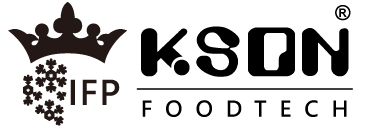EC Marketing Regulation, Fresh poultry definition, -2°C to +4°C
EC Marketing Regulation 1234/2007, Fresh poultry is defined as that which has been kept at temperatures between -2°C and +4°C
- Protection of consumers in the sale of poultry either as whole birds or portions was achieved under the EC Poultry Meat Marketing Regulation 1906/90 which has been incorporated into a combined EC Marketing Regulation 1234/2007. This Regulation defines poultry meat and only allows poultry to be marketed as fresh, frozen or quick-frozen. Fresh poultry is defined as that which has been kept at temperatures between -2°C and +4°C. It is not permitted to market chilled/fresh poultry which has been previously frozen and then thawed.
- Newer refrigeration technology is available to help extend the shelf life of poultry. One treatment is called “superchilling”, where foods are kept at less than 0°C (usually between -2ºC and -5ºC). At these temperatures, the liquid water in the food is mainly in a supercooled state, and the food is only partially frozen where freezing may have taken place between the cells. After storage at “superchilled” temperatures, the temperature of the food is carefully raised up to commercial chill temperatures at or above 0ºC. This process requires very careful temperature control, but it permits the storage life of some foods to be extended considerably by months. The existing definition of fresh poultry in the EC Regulation would prohibit any “superchilled” poultry stored below -2ºC, to be marketed as fresh poultry.(Source: http://www.apajournal.org.uk )
- The Effect of Superchilling and Rapid Freezing on the HADH Assay for Chicken and Turkey
- http://www.apajournal.org.uk/2010_0013-0023.pdf


